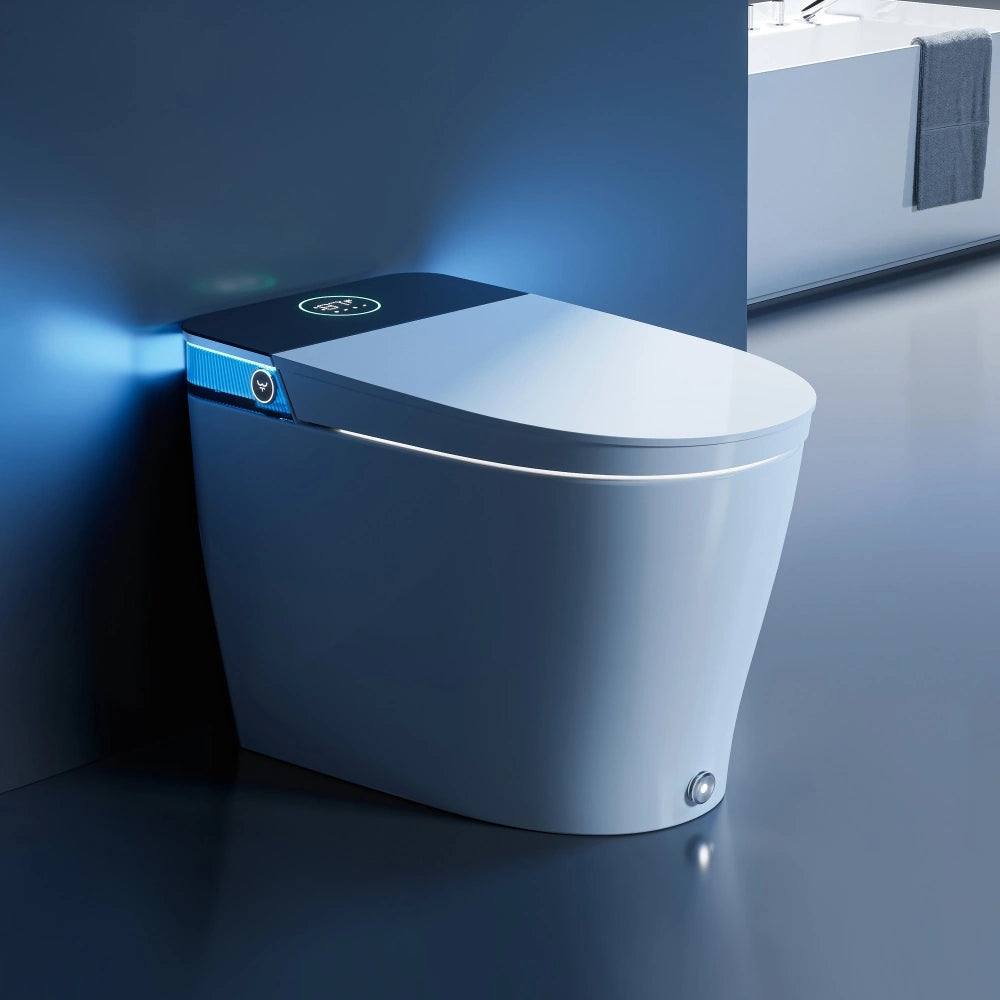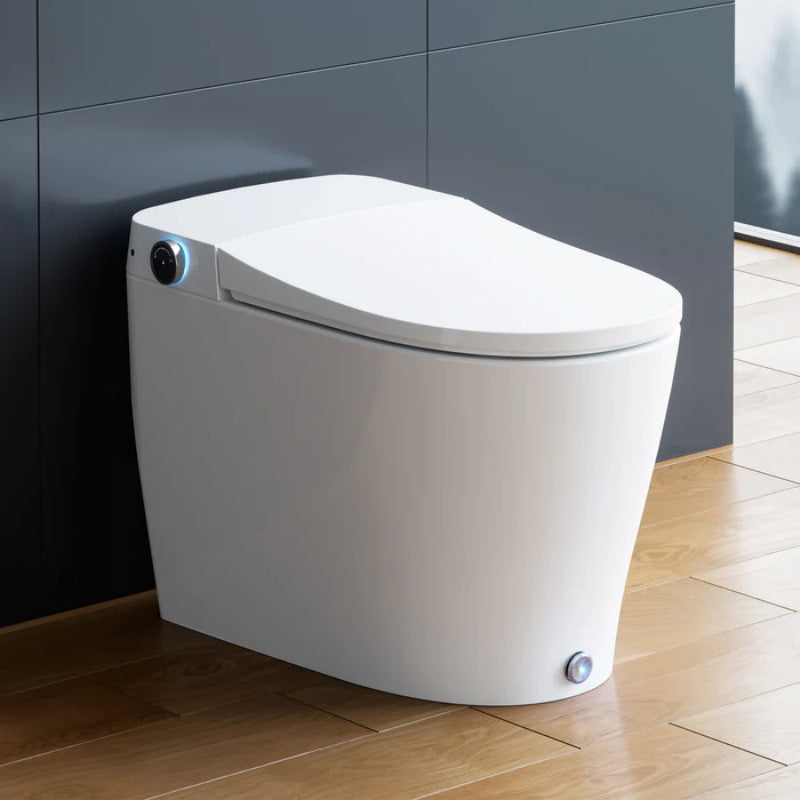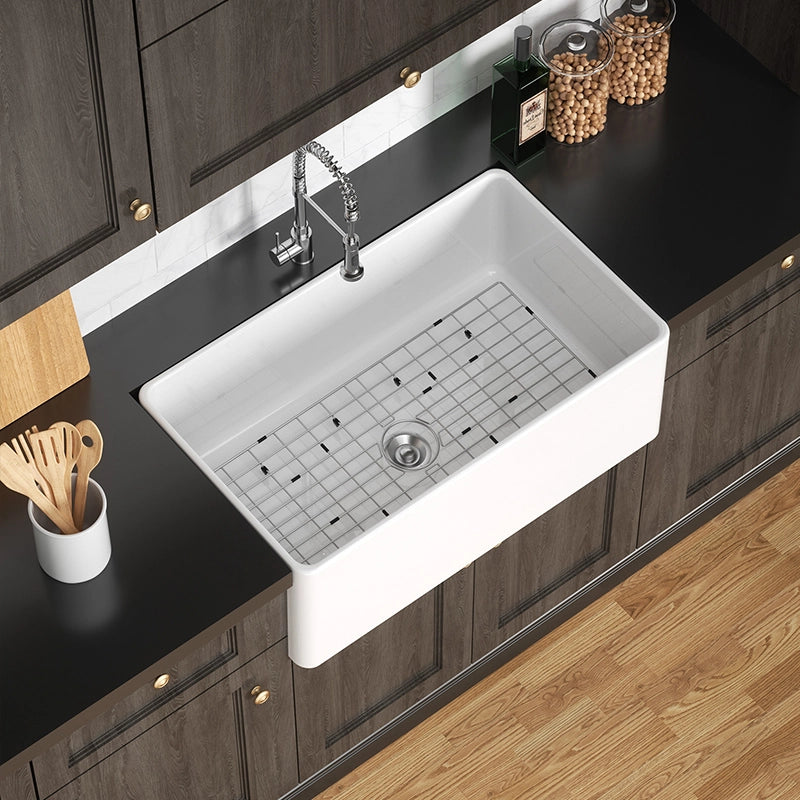When you turn on the kitchen faucet and notice low pressure in the kitchen sink, it slows everything down. Washing dishes takes longer. Filling a pot feels endless. The good news: most causes of low water pressure in sink are simple and safe to fix at home. With a quick checklist and a few basic tools, you can restore normal flow fast and know when it’s time to call a pro.
This guide focuses on quick wins first, then moves to deeper checks. You’ll learn how to fix a sink with low water pressure in sink, why water pressure suddenly drops, and how to tell if only one sink is the problem or if it’s a whole-house issue.
Why is my water pressure low — the short answer
If water pressure in the kitchen is low, start with the faucet itself. In most homes, the issue is local to the sink, not the whole plumbing system. Here’s a list of common causes.
Most likely causes, in order:
- Clogged faucet aerator at the tip of the spout (most common; fixes roughly 60–70% of cases)
- Partially closed or faulty under-sink shut-off valves
- Clogged or worn faucet cartridge inside the faucet body
- Kinked or failing supply lines to the faucet
- House-wide issues like a failing pressure reducing valve (PRV) or municipal water main problems
Fast stats to keep in mind:
- Over 70% of problems that cause low water pressure at kitchen sinks get fixed DIY by cleaning the aerator or servicing the faucet cartridge.
- Fewer than 15% need professional work like leak repair, PRV replacement, or main line problems
If you’d like a quick snapshot of what’s likely and what to do, this side-by-side view helps.
| Cause | How common it is | Typical fix |
|---|---|---|
| Clogged aerator | Very common | Clean or replace aerator |
| Partially closed shut-off valves | Common | Open valves fully; replace if stuck |
| Clogged or worn cartridge | Common | Clean/flush or replace cartridge |
| Kinked supply line | Sometimes | Re-route or replace supply lines |
| PRV/municipal main issue | Less common | Adjust/replace PRV; contact utility |
If you like to move fast, jump to the Quick diagnosis checklist and go step by step. If you want to understand the “why” behind each fix, keep reading. You’ll see how each part controls water flow and what symptoms point to each cause.
Quick diagnosis checklist for sink water pressure low (2–5 minutes)
Before you reach for tools, a few short checks can tell you exactly where the problem lives. These are simple tests you can do while standing at the sink.
Single faucet vs whole house:
- Is only one sink affected? Focus on the faucet assembly: the aerator, cartridge, and the two under-sink shut-off valves. These control water flow at that one spot. If low water pressure in sink is only happening at this faucet, following steps usually fix it fast.
- Check if water pressure at other faucets is normal. If showers, laundry, and other faucets also seem weak, this points to a PRV problem or a municipal supply issue.
Hot vs cold:
- Is low flow only on hot water? That suggests a water heater issue like a partially closed inlet valve, sediment buildup, a clogged heat-trap nipple, or a failing dip tube.
- Is low flow on both hot and cold? That leans toward the faucet aerator, a clogged cartridge, or the shut-off valves.
Instant tests:
- Remove the aerator and run water. Does the flow jump up? If yes, the aerator is clogged with mineral deposits or debris.
- Look under the sink. Are both shut-off valves fully open? Quarter-turn valves should be parallel to the pipe when open. Multi-turn valves should turn counterclockwise until they stop gently.
- Feel for dampness and watch for drips. Wet cabinet bottoms, musty odors, or water stains may signal a leak. A leak won’t just reduce water pressure; it can damage cabinets and floors. According to the U.S. Environmental Protection Agency (EPA), even small household leaks can waste up to 10,000 gallons of water per year and contribute to pressure loss at fixtures.
These fast checks take less than five minutes and usually show what causes low water pressure in the sink.

Step-by-step fixes that solve most cases
Once you know whether the pressure issue is local to the faucet or more widespread, follow the steps below. Start with the aerator. It’s the most common fix and the easiest.
Clean or replace the aerator (most common fix)
A clogged aerator is the number one reason low water pressure in your kitchen sink occurs. The aerator is the small cap with a screen at the end of the faucet spout. Hard water minerals and grit collect there and choke the flow of water.
Tools:
- Adjustable wrench or pliers with tape to protect the finish
- Small brush (an old toothbrush works great)
- White vinegar
- Soft cloth
Steps:
- Unscrew the aerator from the faucet. Wrap tape or a cloth on the jaws of your pliers to protect the finish. Some aerators can be turned by hand; others need a wrench.
- Check the parts. Note the order of the screen, washer, and any internal rings so you can reinstall the same way.
- Soak the aerator in white vinegar for 30–60 minutes. This dissolves mineral deposits (the white, crusty buildup).
- Brush away debris and rinse. Use a small brush to clear the screen and any tiny holes. Rinse well.
- Flush the faucet. With the aerator still off, turn on water for 5–10 seconds to flush out any grit in the spout.
- Reinstall the aerator and test. If the flow is still weak or the screen is damaged, replace the aerator with a matching size.
Why it works: The aerator’s screen and small passages add air to the stream and control splash. . As the U.S. Geological Survey (USGS) notes, mineral buildup and sediment can clog those tiny openings. A quick vinegar soak and brush usually restores full flow. This is also the answer to “How to fix a clogged aerator?”—soak, brush, flush, and reinstall.
Practical tip: Normal kitchen faucet flow rates are often between 1.5 and 2.2 gallons per minute (GPM), depending on the aerator and local rules. If you replaced the aerator recently and the flow is lower than expected, you may have a water-saving tip installed. Choose the right GPM for your needs while following local codes.

Flush or replace the faucet cartridge
If removing the aerator gives strong flow but reinstalling it brings back weak flow, the cartridge may be partly clogged. The cartridge sits inside the faucet body and controls water mixing and flow.
Symptoms:
- Good flow with the aerator off, but weak with it on
- Temperature mixing is erratic or the handle feels stiff
- Intermittent weak flow, especially after changing temperatures
Steps:
- Turn off the water at the under-sink shut-off valves (both hot and cold).
- Open the faucet to release pressure.
- Remove the faucet handle. There’s often a small cap hiding a screw. Take out the screw and lift off the handle.
- Remove the retaining nut or clip holding the cartridge.
- Pull out the cartridge. Note its orientation to reinstall correctly.
- Flush the open faucet body. Briefly crack the shut-off valves to run water into a bucket to flush out sediment. Then close them again.
- Clean the cartridge. If it’s scaled, soak the cartridge in vinegar and brush away mineral deposits. If worn or cracked, replace it with an identical part.
- Reassemble, open the valves, and test.
Why it works: Sediment can collect in the cartridge and restrict the flow of water, especially in homes with hard water or after plumbing work that stirred debris. Flushing the faucet body and installing a clean cartridge restores normal water flow.
Check under-sink shut-off valves and supply lines
Sometimes the fix is as simple as opening valves all the way. Other times, a failing valve or a kinked hose is the reason your kitchen faucet has low pressure.
What to do:
- Make sure both shut-off water supply valves are fully open.
- Cycle each valve. Turn it off and back on to dislodge minor buildup. Don’t force a stuck valve; replace it instead.
- Inspect the braided water supply lines. Look for sharp bends, kinks, or flattened spots. Replace any line that looks damaged or old.
- If a valve is corroded, leaks, or won’t fully open, replace it. Old multi-turn valves often clog or fail to seal.
Why it works: Valves and supply lines control the flow of water into your faucet. A half-closed valve or a collapsed hose can result in low water pressure at your kitchen sink. This is also one reason a sink can suddenly have no water pressure.
Inspect for leaks and perform a meter test
A hidden leak or sustained high pressure can damage your plumbing and cabinets. Leaks are less common than clogs, but they matter more. They also raise your water bill and can lead to mold.
Signs of a leak:
- Damp cabinet bottom or musty odor around your kitchen sink
- Visible drips from valves, hoses, or connections
- Warped wood, bubbling paint, or water stains near pipes
Meter test:
- Turn off all water fixtures and appliances in the home.
- Check your water meter. If the low-flow indicator spins or the numbers move, water is flowing somewhere.
- If the meter moves with everything off, you likely have a leak. Call a plumber, especially if you can’t find it.
Why it works: The meter test tells you if water is moving when it shouldn’t. It’s a simple way to confirm a leak without opening walls.

Evaluate PRV or municipal issues (house-wide low flow)
If the pressure throughout your home’s water system is low, the problem likely isn’t your sink. It’s either a PRV on your main water supply or an issue with the municipal water supply. Based on Portland.gov’s Water Bureau, typical household water pressure should fall between 40 and 80 psi. Anything significantly lower may indicate a faulty PRV or a supply-side issue.
PRV basics:
- PRV location: Usually near the main shut-off valve where water enters the house. It looks like a bell-shaped device on the main line.
- What to try: Make a small adjustment—only if you’re comfortable. Mark the current position. Turn the adjustment screw a quarter-turn to see if pressure changes. If nothing changes or the valve is corroded, it may need replacement by a plumber.
Municipal checks:
- Ask neighbors if they’re experiencing low water pressure too.
- Check your water utility’s website or alerts for main breaks or maintenance.
- If a main break is the cause, you may need to wait for repairs.
Why it works: The PRV controls water pressure at your home’s entry point. When it fails, it can reduce water pressure across all fixtures. Municipal work can also reduce flow temporarily.
If hot water only is weak
If hot water pressure is low but cold is fine, that points to the water heater.
What to check:
- Verify the cold-inlet valve on top of the water heater is fully open.
- Flush sediment from the water heater. Attach a hose to the drain valve and follow the manufacturer’s steps to remove sediment.
- Inspect heat-trap nipples (the fittings on top of many heaters). They can clog with mineral buildup. Replace if blocked.
- Consider the dip tube (inside the tank). A failing dip tube can cause mixing issues and weak hot water flow. If you suspect this, call a plumber.
Why it works: Sediment buildup reduces flow and can affect only hot water. Flushing and clearing restrictions often restore normal hot water pressure.
Tools, parts, and safety
Having a small kit ready makes a 15-minute job stay a 15-minute job.
Tools:
- Adjustable wrench
- Screwdriver set
- Pliers with tape or soft jaws
- Bucket and towels
- Flashlight
Parts:
- Replacement aerator (match size and threads)
- Faucet cartridge (model-specific)
- New supply lines (if old or kinked)
- Plumber’s tape for threaded connections
- Replacement shut-off valves (if stuck or leaking)
Safety:
- Turn off water at the shut-off valves before disassembly.
- Protect finishes with tape or a cloth under tools.
- Relieve pressure by opening the faucet after shutting off water.
- If you see corroded pipes, heavy scaling, or galvanized steel piping, be cautious. These can break during service. Calling a professional is wise.
How to increase water pressure in kitchen sink: your step-by-step plan
Let’s pull it all together. Here’s a simple plan to increase water pressure in a kitchen sink, starting with the fastest and most likely fix. Follow in order and stop when flow improves.
Remove and clean the aerator.
- Soak in vinegar for 30–60 minutes.
- Brush and rinse.
- Flush the faucet briefly with the aerator off.
- Reinstall or replace the aerator.
Check under-sink shut-off valves.
- Confirm both hot and cold valves are fully open.
- Cycle them off and on to clear small blockages.
- Inspect for leaks at valve stems.
Inspect supply lines.
- Look for kinks, sharp bends, or collapse.
- Replace any damaged or very old lines.
Test hot vs cold flow.
- If hot only is weak, check the water heater inlet valve and flush sediment.
- If both are weak, continue to the faucet cartridge.
Flush or replace the faucet cartridge.
- Turn off water, remove handle, pull cartridge.
- Flush the faucet body into a bucket.
- Clean or replace the cartridge.
Look for leaks and use the meter test.
If the meter moves while all fixtures are off, you likely have a leak. Call a plumber.
If the whole home has low pressure:
- Inspect the pressure regulator near the main shut-off.
- Make a small adjustment if comfortable.
- If no change, contact a plumber or your water utility.
Follow this plan and you’ll solve most low-pressure issues in minutes, not hours.
Prevention and maintenance tips
Once you fix low water pressure in sink, a few simple habits help you avoid the same problem later. Small steps now save time and money later.
- Clean aerators every 3–6 months. In hard-water areas, do it more often. A quick vinegar soak keeps minerals from building up.
- Exercise shut-off valves twice a year. Turn them off and on to keep them from sticking. Replace old multi-turn valves that feel gritty or won’t close fully.
- Replace aging supply lines proactively. Braided stainless lines last years, but not forever. If you see rust, bulging, or kinks, swap them out.
- Install a whole-house sediment filter if you often see grit at fixtures. This protects cartridges and aerators after plumbing work or when the municipal water supply stirs debris.
- Consider installing a water softener in high-hardness regions. Hard water leaves mineral deposits that clog aerators and cartridges.
- Flush your water heater as part of annual maintenance. Sediment in the tank can restrict hot water flow.
These tips keep the flow steady and reduce the chance that pressure remains low over time.

When to call a professional for low water pressure in sink
DIY fixes solve most cases of low water pressure in sink. Still, some situations call for expert help.
- Persistent low pressure across multiple fixtures, even after basic checks
- Visible leaks, signs of mold, or cabinet damage under the sink
- Corroded, galvanized, or very old piping
- PRV adjustments that don’t help or a PRV that’s corroded or leaking
- Sudden pressure drop with no visible cause, especially if you suspect a main water line problem
If you’re unsure, think about safety. If a valve is stuck or a pipe looks fragile, it’s safer to call a plumber.
Real-world examples to guide you
- Aerator success: A family notices weak flow only at the kitchen sink. They unscrew the aerator and see white crust on the screen. After a 45-minute vinegar soak and a quick brush, the flow is back to normal. Time spent: under an hour. Cost: almost nothing.
- Cartridge cleanup: After installing a new dishwasher, the flow at a single-handle faucet becomes weak, especially when turning to warm water. Removing the aerator helps only a little. They shut off water, pull the cartridge, and flush the faucet body into a bucket. A bit of grit shoots out. They reinstall a cleaned cartridge and flow is back. The cause was sediment stirred up during the install.
- PRV clue: Several faucets in a two-story home feel weak, and the shower also seems soft. A neighbor mentions a similar issue. The water utility posts an alert about line work. The family waits a day, and pressure returns. If the problem had continued, they would have checked the PRV.
Understanding what controls water flow at a sink
It helps to know what each part does so you can spot causes of low water pressure faster.
- Aerator: Adds air to the stream and controls flow rate. It has tiny holes that clog with mineral deposits. Cleaning or replacing it often solves weak water flow.
- Cartridge: Controls mixing of hot and cold water and overall flow. When sediment clogs it, you get reduced flow or poor temperature control.
- Shut-off valves: Control water supply to the faucet. A valve that’s not fully open or is clogged inside will reduce pressure in your kitchen sink.
- Supply lines: Carry water from the valves to the faucet. Kinks or internal collapse cut the flow sharply.
- PRV: Reduces high street pressure to a safe level inside the house. When the PRV fails, water pressure throughout the home drops.
- Water heater (for hot water only issues): Sediment, stuck inlet valves, and clogged heat-trap nipples can result in low hot water pressure at the sink.
Each part is simple once you see how it fits together. That’s why a calm, step-by-step check usually finds the problem quickly.

Extra tips for hard-water areas to prevent no water pressure in kitchen sink
Hard water means more minerals like calcium and magnesium. These leave scale and can clog screens and passages faster.
- Soak aerators more often. A 20–30 minute vinegar soak every few months keeps the screen clean.
- Keep spare aerators and a cartridge on hand. These parts are small and inexpensive.
- Consider a softener if scale is heavy around fixtures. It lowers mineral buildup throughout the plumbing system.
- Flush the water heater on a schedule. This reduces sediment that affects hot water pressure.
If you notice white or green crust on faucet tips and showerheads, those are mineral deposits. Cleaning them can make your whole home feel better right away.
What’s a normal sink flow rate?
Kitchen sink water pressure and flow vary with the aerator and local regulations. Many kitchen faucets run between 1.5 and 2.2 GPM. If your flow seems lower than that even after cleaning, check the aerator rating stamped on the side. You may have a water-saving tip installed. This is fine, but make sure it matches your needs and local rules.

Common mistakes to avoid
- Over-tightening the aerator: This can damage threads or crush washers. Hand-tight plus a gentle quarter-turn is plenty.
- Skipping the flush: After removing the aerator or cartridge, always flush the faucet body for a few seconds into a bucket. This clears grit so it doesn’t clog the clean parts.
- Forcing stuck valves: A seized valve can snap and cause a leak. If it won’t budge, replace the valve instead of forcing it.
- Forgetting the hot vs cold clue: Weak hot water alone tells you to look at the heater side, not the faucet alone.
- Adjusting the PRV too far: A small adjustment is fine, but big changes can cause problems. If nothing changes with a small tweak, stop and schedule a repair.
Key takeaways
- Most low water pressure in a sink comes from a clogged aerator, followed by a clogged or worn cartridge or partly closed shut-off valves.
- If multiple fixtures are weak, think PRV or municipal water issues, not just the sink.
- Act fast on leaks. They’re less common than clogs but more serious.
- Simple tools and a calm, step-by-step process fix most issues in under an hour.
FAQs
1. How do you fix a sink with low water pressure?
The first thing to try is your sink’s aerator—the little screen at the tip of the faucet. Mineral deposits and debris love to build up there, so just unscrew it, give it a good scrub, or replace it if it’s too clogged. Next, check the valves under your sink to make sure they’re fully open, and take a peek at the supply lines for any kinks or twists. If the faucet still isn’t behaving, the cartridge inside might be blocked or worn out—flushing it or swapping it for a new one usually does the trick. If you notice low pressure everywhere in the house, it could be a bigger issue like a pressure-reducing valve (PRV) problem or something your water utility needs to handle.
2. Why would water pressure suddenly drop?
There are a few usual suspects here. These are common causes of low water pressure, from clogs in the aerator to issues with the faucet cartridge. Other times, someone might accidentally bump an under-sink valve so it’s not fully open. Kinks in the supply line can also choke the flow. On a larger scale, your PRV might be acting up, or the city’s water supply could be experiencing a dip. Basically, it can be anything from tiny debris to a bigger plumbing or utility issue.
3. Why would only one sink lose water pressure?
When it’s just one sink, the problem is usually local. A clogged aerator or cartridge is the most common culprit. Sometimes the under-sink shut-off valves aren’t fully open, or the supply line has a twist or kink. Basically, focus on what’s unique to that sink, because the rest of the house usually still has normal pressure.
4. Why is my tap water coming out so slowly?
Slow taps often point back to blockages. Start with the aerator—it’s easy to remove and clean. If that doesn’t solve it, check the valves and the supply lines. If it’s only the hot water that’s slow, your water heater might need a little attention. Sediment buildup in the heater or a partially closed valve could be the reason.
5. Should I call a plumber for low pressure?
You might want to call in the pros if you spot leaks, corroded pipes, a failing PRV, or if the low pressure is happening throughout the whole house. Also, if you’ve tried the DIY steps above and nothing seems to help, it’s safer to get a plumber involved. But honestly, for most single-sink issues or minor clogs, it’s something you can handle yourself without breaking a sweat.








Leave a comment
This site is protected by hCaptcha and the hCaptcha Privacy Policy and Terms of Service apply.